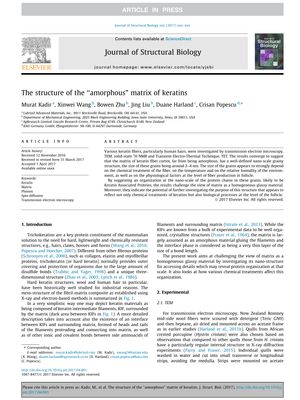The Structure of the Amorphous Matrix of Keratins
April 2017
in “
Journal of structural biology
”

TLDR Human hair keratin fibers have a detailed nano-scale structure that changes with different conditions.
The study investigated human hair keratin fibers using TEM, solid-state 1H NMR, and TET, revealing that the keratin fiber cortex has a well-defined nano-scale grainy structure, with grains sized 2-4 nm. This structure varied with chemical treatments, temperature, humidity, and physiological factors during fiber production. The findings challenged the view of the matrix as a homogeneous glassy material and suggested that the nano-scale organization of protein chains, likely Keratin Associated Proteins, could be influenced by both chemical and biological processes.




